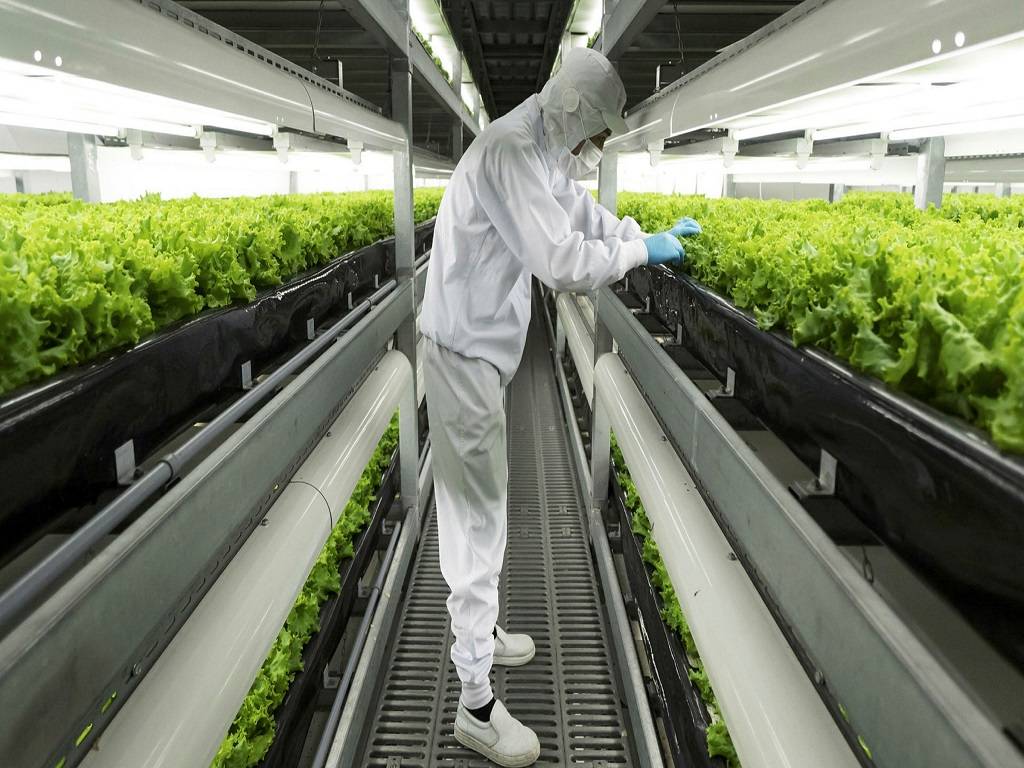
We have no idea how much more we will lose in the next 40 years. One of the most pressing difficulties we face is meeting rising food demand due to a growing population and shrinking arable land. Many people feel that vertical farming is the solution to this problem. Is vertical farming the way of the future for farming?
Are you also thinking of reaping the benefits of Vertical Farming and starting a Vertical Farm in Your Locality? Let's see what are the critical factors to consider while investing in Vertical Farming!
"Lettuce alone isn't enough to feed the world"
Because lettuce, herbs, and microgreens are easy crops to cultivate indoors, many indoor farms specialize in them. Farmers, on the other hand, cannot ignore two economic realities: 1) markets are subject to supply and demand dynamics, and 2) agricultural inventories are perishable.
If your vertical farm and three competitors each have massive warehouses crammed with lettuce grown under LED lights and heading for the same metro region, the price of lettuce in that area is at risk of dropping, and/or someone will be wasting a lot of wilting greens.
Other crops can be managed to grow indoors as well.
More basic Science is required
Humans have been cultivating food for 12,000 years, but just a generation or two has been growing crops indoors. We're still climbing the technological learning curve, so reliable data are scarce on basic questions like comparing crop yields for plants grown outside in soil, inside a greenhouse, and indoors using hydroponics.
Furthermore, traditional farming techniques are predicated on situations that do not apply to vertical farming. Food crops grown outdoors are subjected to changes in rainfall, light, and wind, as well as competition with other plants for nutrients in variable-quality soil and the potential of animal or insect predation.
Vertical farming eliminates the uncertainties inherent in nature, yet removing plants from their natural environments implies that we know everything there is to know about what a plant needs to survive. We don't have any. Without that understanding, we'll end up with an abundance of easy-to-grow indoor crops like lettuce, herbs, and leafy greens.
Vertical farming, on the other hand, is unlikely to be able to live up to its high implied promises unless time is spent learning about the science (or investment valuations).
Vertical farming is neither a pie-in-the-sky nor a lay-up
One of the most significant challenges a vertical farm must overcome to compete with traditional farm fruits and vegetables is the expense of powering LED grow lights.
LED technology is advancing all the time, and governments all across the world will eventually opt to stop externalizing the cost of greenhouse gas emissions. However, large-scale vertical farm profitability is expected to stay low until then.
Vertical farming has a lot of advantages in terms of sustainability
Vertical farming creates huge efficiency in other areas, even though energy expenses are not a lay-up. Because the same water may be recycled several times through the same hydroponic system, water use might be greatly decreased.
Herbicides and pesticides for weed and pest management may be considerably decreased, and pesticides and insecticides are unneeded. These agricultural chemicals, which are frequently over-applied and then wash off into rivers and lakes, are likely to blame for anything from ocean dead zones to algal blooms to pollinator insect die-offs.
When you consider the economic advantages of clean oceans and healthy pollinators, it's evident that vertical farming has genuine value for society. However, many people will struggle to fully grasp the advantages as long as the price of carbon emissions and pollution is not explicitly charged.
The future will most likely be hybrid
Moving to vertical farming is a no-brainer in some regions, such as the Middle East. Solar energy may be used to light LEDs at a minimal cost in an indoor farm in Saudi Arabia, for example, without shadowing off other farmland. Almost all veggies must now be imported into the nation, so having locally grown crops would be a huge plus.
However, in other parts of the world, the cost of establishing a facility sets a high bar for development and profitability that vertical farms have struggled to overcome. AeroFarms, for example, a big vertical farming and equipment enterprise only began to make a (small) profit eight years into its nine-year existence.
















